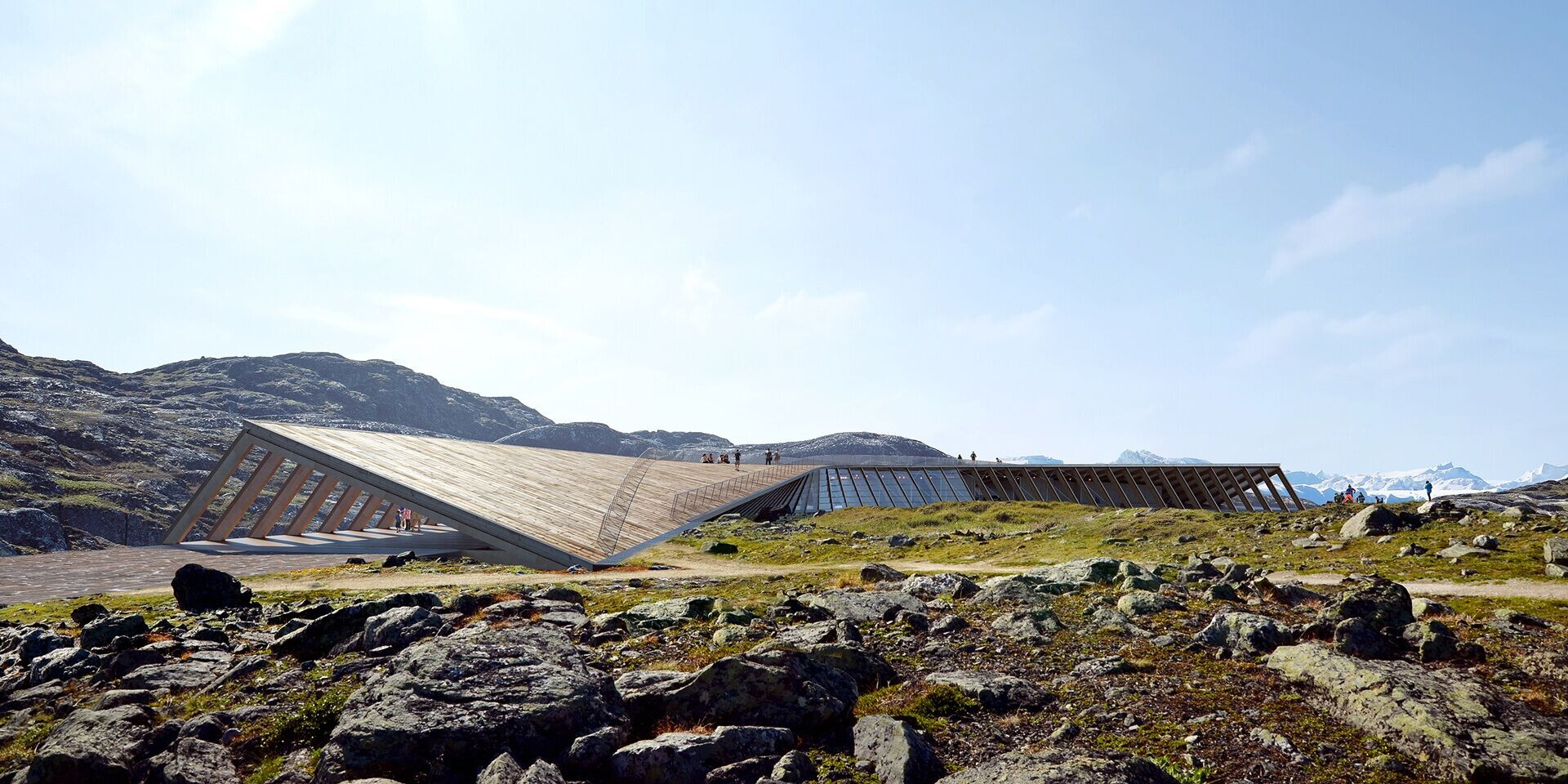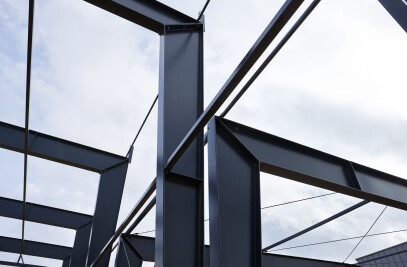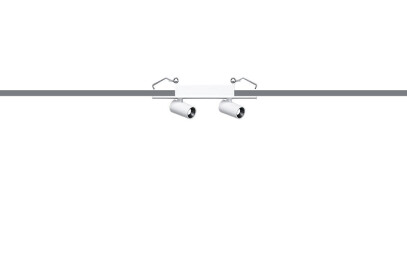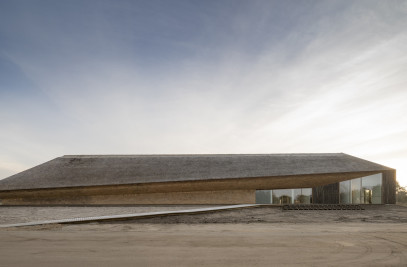DORTE MANDRUP DESIGNS SPECTACULAR ICEFJORD CENTRE IN GREENLAND HIGHLIGHTING THE EFFECTS OF CLIMATE CHANGE
In the harsh yet beautiful Arctic landscape surrounded by snow and ice, Dorte Mandrup has designed Ilulissat Icefjord Centre on the edge of the UNESCO-protected Greenland wilderness.
Overlooking the Kangia Icefjord on the west coast of Greenland, 250 km north of the Arctic Circle, the building blends effortlessly into the landscape and offers a unique vantage point from which to experience the astonishing Icefjord and understand the dramatic consequences of climate change on this remarkable landscape.
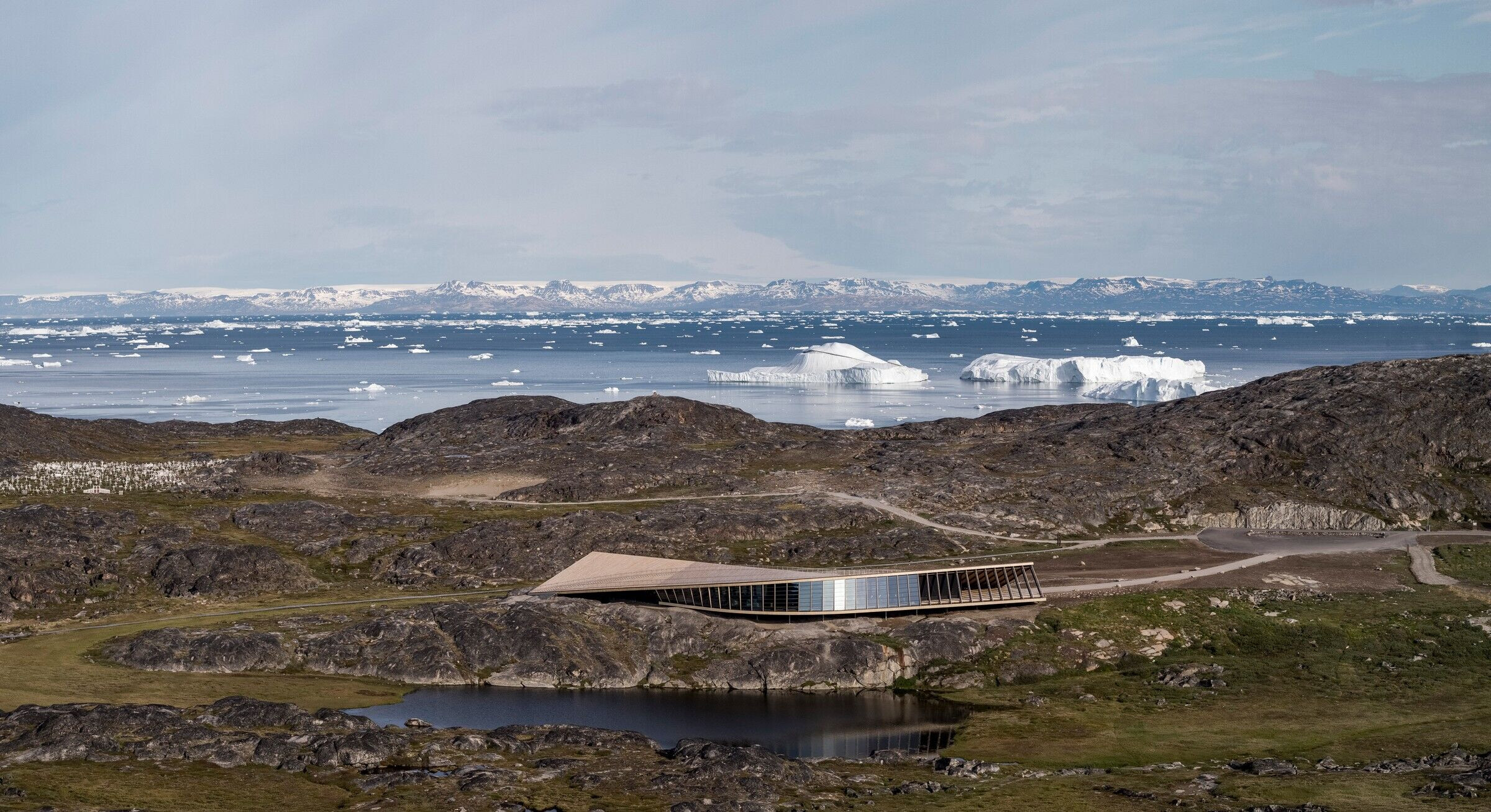
Described by founder and creative director, Dorte Mandrup as “a snowy owl’s flight through the landscape", the aerodynamic, light structure of the building appears to levitate over the magnificent, rugged terrain - like an outstretched wing gently touching the bedrock. The shape frames the views towards the fjord while preventing snow build-up and creating a shelter from the snow and freezing winds.
"The Icefjord Centre offers a refuge in the dramatic landscape and aims to become a natural gathering point from which you can experience the infinite, non-human scale of the Arctic wilderness, the transition between darkness and light, the midnight sun, and the Northern lights dancing across the sky," says Dorte Mandrup.
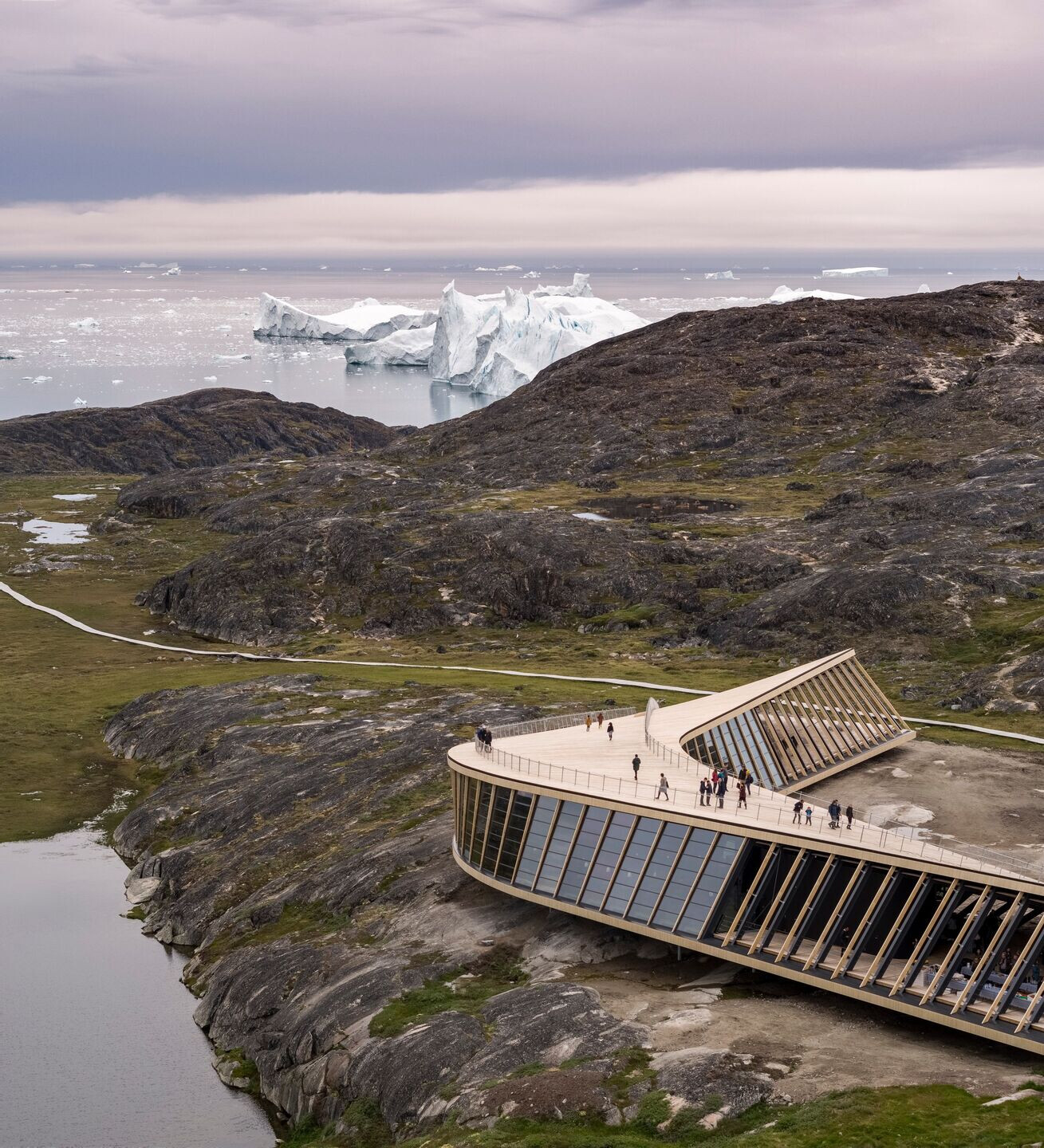
Designed as a year-round visitor centre and meeting place for local residents, companies, politicians, climate researchers and tourists, the centre will house exhibitions, a film theatre, a café and shop as well as research and educational facilities. It tells the story of ice, of humankind and evolution on both a local and global scale and relates to the history of time – sitting lightly on the Greenlandic bedrock – which is the oldest in the world.
The roof provides a natural extension of the area’s hiking routes, leading visitors onto one of the best look-out spots to see the massive icebergs in the fjord and the surrounding landscape. It Is created as a public space –a kind of gateway between the town of Ilulissat and the wilderness beyond. It is open to the public and free to access. At each end of the building there are also covered spaces, creating shelter, and gathering places.

When the first glimmer of light hits the horizon in January after six weeks of darkness, the community gathers in this area to celebrate the sun coming up for 40 minutes before leaving again. The hope is that the roof will become the place for this important gathering.
An important factor is that the building is as sustainable as possible. It is mainly constructed around a steel frame with the absolute minimum use of concrete – usually the main contributor to the carbon footprint – which also means the structure is extremely lightweight. The lightness of the structure makes the impact on the ancient bedrock and its fragile flora and fauna minimal.
Inside the centre, visitors can learn more about the nature and culture unfolding before their eyes. They can experience the journey of ice from the birth of the ice crystal in Greenland's cold cloud layer, to when it becomes part of the inland ice and finally moves towards the glacier and breaks off in icebergs. Also, how different Inuit cultures lived under these harsh conditions and how climate change manifests itself in the Arctic landscape.

The exhibition, designed by JAC Studios, consists of a landscape of ice flakes where archeological objects and films are exhibited in ice prisms of glass that visitors can move between. The ice prisms are created from ice blocks collected in the Kangia Ice Fjord, 3D scanned, and mouth blown in glass. Central to the exhibition are authentic ice core drillings taken from the ice sheet, they tell the story about our culture and climate from 124.000 years BC to the present
The Icefjord Centre is funded by a partnership between the Danish philanthropical foundation Realdania, Avannaata Kommunia and Naalakkersuisut - the government of Greenland. The exhibition was furthermore funded by Nordea Foundation, Augustinus Foundation, Bloomberg Philatropies and OAK Foundation.













